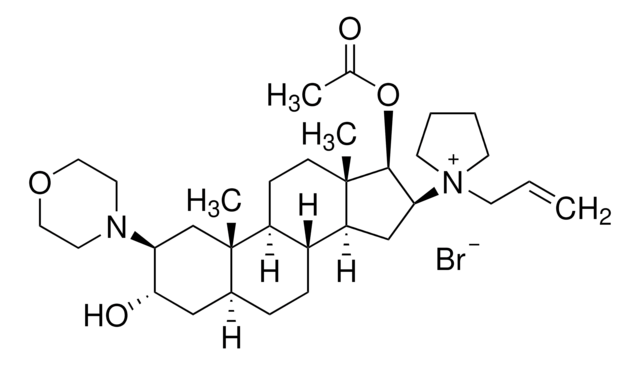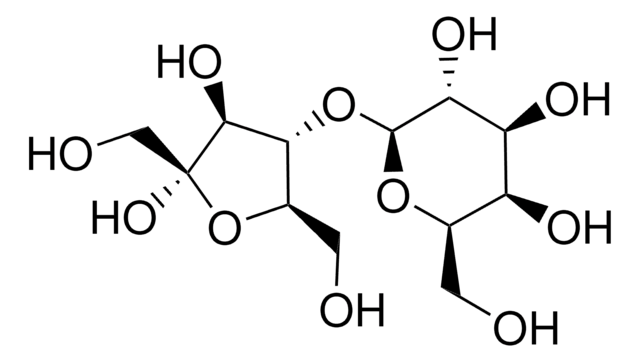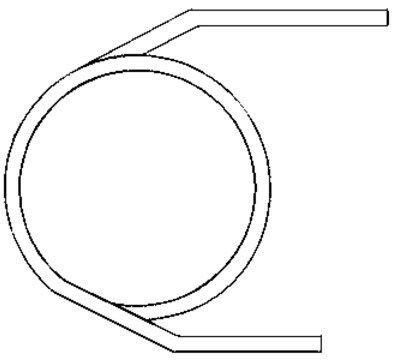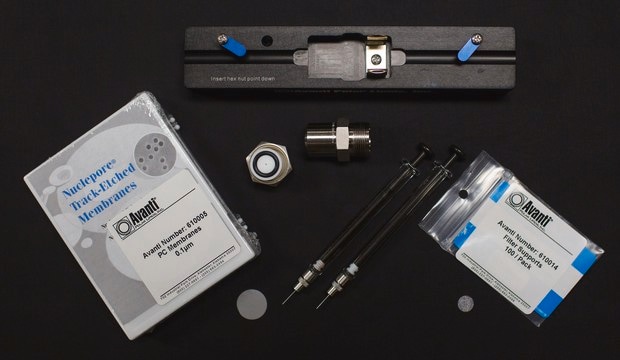Kluczowe dokumenty
Y0001580
Rocuronium bromide
European Pharmacopoeia (EP) Reference Standard
About This Item
Polecane produkty
klasa czystości
pharmaceutical primary standard
rodzina API
rocuronium
producent / nazwa handlowa
EDQM
rozpuszczalność
H2O: 100 mg/mL, clear, light yellow
Zastosowanie
pharmaceutical (small molecule)
Format
neat
temp. przechowywania
−20°C
ciąg SMILES
[Br-].CC(=O)O[C@H]1[C@H](C[C@H]2[C@@H]3CC[C@H]4C[C@H](O)[C@H](C[C@]4(C)[C@H]3CC[C@]12C)N5CCOCC5)[N+]6(CCCC6)CC=C
InChI
1S/C32H53N2O4.BrH/c1-5-14-34(15-6-7-16-34)28-20-26-24-9-8-23-19-29(36)27(33-12-17-37-18-13-33)21-32(23,4)25(24)10-11-31(26,3)30(28)38-22(2)35;/h5,23-30,36H,1,6-21H2,2-4H3;1H/q+1;/p-1/t23-,24+,25-,26-,27-,28-,29-,30-,31-,32-;/m0./s1
Klucz InChI
OYTJKRAYGYRUJK-FMCCZJBLSA-M
informacje o genach
human ... CHRNA1(1134) , CHRNB1(1140) , CHRND(1144) , CHRNE(1145) , CHRNG(1146)
Szukasz podobnych produktów? Odwiedź Przewodnik dotyczący porównywania produktów
Opis ogólny
Zastosowanie
Działania biochem./fizjol.
Opakowanie
Inne uwagi
produkt powiązany
Hasło ostrzegawcze
Danger
Zwroty wskazujące rodzaj zagrożenia
Zwroty wskazujące środki ostrożności
Klasyfikacja zagrożeń
Acute Tox. 3 Oral - STOT SE 3
Organy docelowe
Respiratory system
Kod klasy składowania
6.1C - Combustible acute toxic Cat.3 / toxic compounds or compounds which causing chronic effects
Klasa zagrożenia wodnego (WGK)
WGK 3
Temperatura zapłonu (°F)
Not applicable
Temperatura zapłonu (°C)
Not applicable
Wybierz jedną z najnowszych wersji:
Certyfikaty analizy (CoA)
It looks like we've run into a problem, but you can still download Certificates of Analysis from our Dokumenty section.
Proszę o kontakt, jeśli potrzebna jest pomoc Obsługa Klienta
Masz już ten produkt?
Dokumenty związane z niedawno zakupionymi produktami zostały zamieszczone w Bibliotece dokumentów.
Nasz zespół naukowców ma doświadczenie we wszystkich obszarach badań, w tym w naukach przyrodniczych, materiałoznawstwie, syntezie chemicznej, chromatografii, analityce i wielu innych dziedzinach.
Skontaktuj się z zespołem ds. pomocy technicznej






